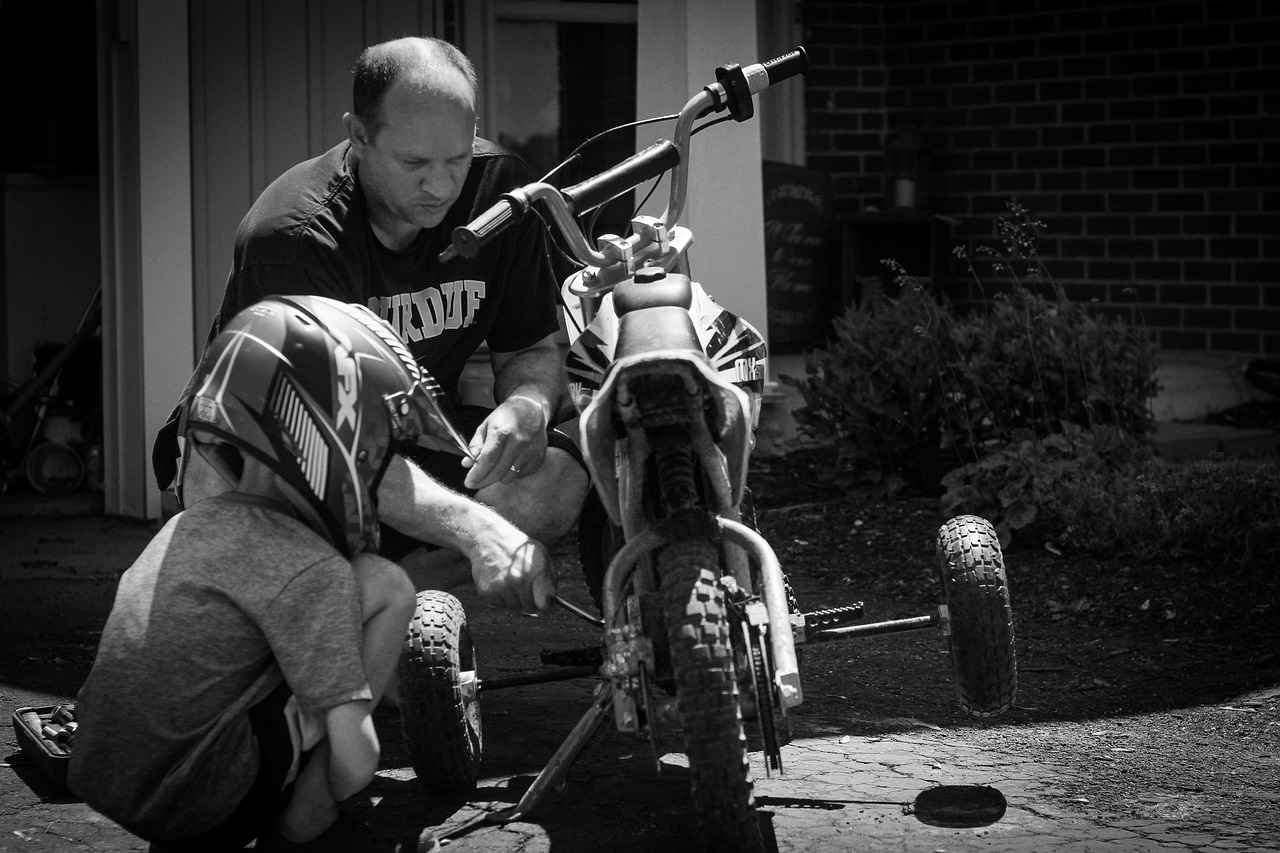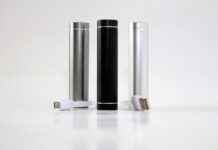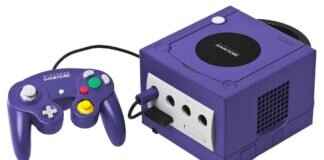This article serves as a comprehensive guide on maintaining your electric bike, ensuring it operates at peak performance. By following essential tips, techniques, and best practices, you can keep your e-bike in top shape for years to come.
Understanding the various components of your electric bike is crucial for effective maintenance. Familiarizing yourself with these parts will enable you to identify what needs regular attention, ensuring longevity and optimal performance.
- Battery: The heart of your e-bike, requiring special care.
- Motor: Powers your bike and needs to be in good condition.
- Brakes: Essential for safety and performance.
- Tires: Impact traction and ride quality.
Establishing a routine maintenance checklist is vital for prolonging your e-bike’s lifespan. Here’s a detailed list of tasks to perform regularly:
- Check battery health and connections monthly.- Clean the bike frame and components weekly.- Inspect tires for wear and maintain proper pressure bi-weekly.- Test brakes before every ride.- Check motor and electrical connections quarterly.
Battery Care and Management
The battery is essential for your electric bike’s operation. To maximize its life and efficiency, follow these best practices for charging and storage:
- Charging Tips: Avoid overcharging and ensure you use the correct charger.
- Storage Recommendations: Store in a cool, dry place, especially during off-seasons.
Cleaning and Lubrication
Regular cleaning and lubrication are crucial for maintaining your bike’s performance. Use appropriate cleaning solutions and lubricants for different components to enhance durability.
Tire Maintenance and Inspection
Inspecting your tires is vital for safety. Maintain the correct tire pressure and replace them when necessary to prevent accidents.
Brake System Maintenance
A well-functioning brake system is critical for safety. Regularly check brake pads and adjust cables to ensure optimal performance.
Electrical System Checks
Regularly inspect wiring and connections to ensure reliable performance. Diagnosing electrical issues early can prevent major breakdowns.
By following these guidelines, you can ensure that your electric bike remains in top condition, providing you with a safe and enjoyable riding experience.

Understanding Your Electric Bike Components
Understanding the various components of your electric bike is essential for effective maintenance and optimal performance. Each part plays a crucial role in ensuring that your e-bike operates smoothly. This section will delve into the key components, their functions, and the importance of regular maintenance.
- Battery: The battery is the powerhouse of your electric bike. It stores energy and powers the motor, making it vital to understand its capacity, charging cycles, and maintenance requirements. Regularly checking the battery’s health can prevent unexpected failures.
- Motor: The motor is responsible for propelling the bike. Familiarize yourself with the type of motor your e-bike uses, whether it’s hub-mounted or mid-drive, as this affects performance and maintenance. Keeping the motor clean and well-lubricated is essential for longevity.
- Controller: The controller manages the power flow between the battery and the motor. Understanding how to troubleshoot common issues with the controller can save you time and money in repairs.
- Brakes: The braking system is crucial for safety. Regularly inspecting brake pads and adjusting brake cables ensures that you have effective stopping power. Knowing when to replace these components is key to safe riding.
- Tires: Tires significantly impact handling and safety. Regularly check tire pressure and tread wear to maintain optimal traction. Proper maintenance can enhance your riding experience and prevent accidents.
- Frame and Suspension: The frame supports the bike’s structure, while suspension systems improve comfort. Inspecting these components for any signs of wear or damage is essential for a safe and enjoyable ride.
By familiarizing yourself with these components, you can identify which parts require regular attention, ensuring your electric bike remains in top shape. Regular maintenance not only extends the life of your e-bike but also enhances your overall riding experience.

Routine Maintenance Checklist
Establishing a for your electric bike is essential for maximizing its lifespan and ensuring it operates at peak performance. By following a structured approach to maintenance, you can prevent costly repairs and enjoy a smoother riding experience. Below is a comprehensive list of essential tasks that should be performed regularly to keep your e-bike in top shape.
| Maintenance Task | Frequency | Description |
|---|---|---|
| Check Tire Pressure | Weekly | Ensure tires are inflated to the recommended PSI for optimal performance and safety. |
| Inspect Brake Pads | Monthly | Check for wear and replace if necessary to maintain safe braking performance. |
| Clean and Lubricate Chain | Every 2 Weeks | Keep the chain clean and well-lubricated to enhance shifting performance and prolong its life. |
| Battery Check | Monthly | Inspect battery connections and charge levels to ensure reliable power supply. |
| Frame Inspection | Every 3 Months | Look for any signs of damage or wear on the frame and components. |
| Electrical System Check | Every 6 Months | Inspect wiring and connections for signs of wear or damage to prevent electrical failures. |
Incorporating these tasks into your routine will help you maintain your electric bike effectively. Remember that proactive maintenance is key to avoiding unexpected issues and enhancing the overall riding experience. By dedicating a little time each month to these checks, you can ensure that your e-bike remains in excellent condition for years to come.
Battery Care and Management
The battery is the heart of your electric bike, playing a crucial role in its overall performance and longevity. Proper care and management of your e-bike’s battery can significantly enhance its lifespan and efficiency. Below, we outline the best practices for charging, storing, and maintaining your battery.
Charging Your Battery
- Use the Right Charger: Always use the charger that is specifically designed for your battery type. Using an incorrect charger can lead to damage.
- Avoid Overcharging: Disconnect the charger once the battery is fully charged to prevent overheating and potential damage.
- Charge Regularly: For optimal performance, try to keep your battery charged between 20% and 80%. Frequent deep discharges can shorten its lifespan.
Storing Your Battery
- Temperature Matters: Store your battery in a cool, dry place. Extreme temperatures can adversely affect battery health.
- Partial Charge for Storage: If you plan to store your e-bike for an extended period, ensure the battery is charged to about 50% to maintain its health.
- Regular Checks: Periodically check the battery’s charge level during storage and recharge it if necessary to prevent deep discharge.
Maintaining Your Battery
- Clean Connections: Regularly clean the battery terminals to prevent corrosion and ensure a good connection.
- Monitor Performance: Keep an eye on how your battery performs. If you notice a significant drop in range or performance, it may be time to consult a professional.
- Follow Manufacturer Guidelines: Always refer to the manufacturer’s manual for specific maintenance instructions tailored to your battery model.
By adhering to these best practices for battery care and management, you can significantly extend the life of your electric bike’s battery, ensuring that it remains efficient and reliable for all your riding adventures.
Charging Tips for Longevity
Proper charging techniques are essential for maximizing the lifespan of your electric bike’s battery. By following a few simple guidelines, you can significantly enhance battery performance and longevity. Here are some effective tips to ensure you charge your battery correctly:
- Use the Right Charger: Always use the charger that came with your electric bike. Using incompatible chargers can lead to overcharging or undercharging, which can damage the battery.
- Charge Regularly: It’s best to charge your battery after every ride, especially if you’ve used a significant portion of its capacity. This practice helps maintain battery health and prevents deep discharges that can shorten its lifespan.
- Avoid Overcharging: While modern batteries have built-in protection, it’s still wise to unplug the charger once it reaches a full charge. Overcharging can lead to excessive heat, which can harm battery cells.
- Charge in a Cool Environment: Heat is detrimental to battery health. Always charge your battery in a cool, dry place to prevent overheating, which can occur if charging in direct sunlight or a hot garage.
- Use Smart Charging Modes: If your charger has a smart charging feature, utilize it. These chargers automatically adjust the current to optimize charging, reducing stress on the battery.
- Monitor Charge Levels: Keep an eye on your battery’s charge level. Avoid letting it drop below 20% frequently, as deep discharges can lead to reduced capacity over time.
- Store Properly: If you plan to store your electric bike for an extended period, charge the battery to around 50% before storage. This level helps maintain battery health during inactivity.
By implementing these charging tips, you can ensure that your electric bike’s battery remains healthy, providing you with reliable performance and extended usage throughout its life.
Storage Recommendations
Properly storing your electric bike is crucial, particularly during off-seasons when it may not be in use. By following best practices for e-bike storage, you can significantly reduce the risk of battery degradation and component wear. Here are some essential tips to ensure your electric bike remains in optimal condition while stored:
- Clean Your E-Bike: Before storing, thoroughly clean your electric bike to remove dirt, grime, and moisture. This helps prevent rust and corrosion on metal components.
- Battery Management: Store the battery in a cool, dry place. Ideally, keep it at a charge level between 40% and 60%. Avoid storing it fully charged or completely depleted, as both conditions can shorten battery lifespan.
- Temperature Control: Choose a storage location that maintains a stable temperature. Extreme temperatures can damage the battery and other components. Aim for a range between 32°F and 68°F (0°C and 20°C).
- Cover Your E-Bike: Use a breathable cover to protect your bike from dust and moisture. Avoid plastic covers, as they can trap humidity and lead to mold growth.
- Check Tire Pressure: Before storing, inflate your tires to the recommended pressure. This helps maintain their shape and prevents flat spots from developing.
- Lubricate Moving Parts: Apply lubricant to the chain and other moving parts to protect them from rust and ensure they remain functional when you resume riding.
- Secure Your E-Bike: Always lock your bike, even when storing it indoors. This adds an extra layer of security against theft.
By following these storage recommendations, you can help ensure your electric bike remains in excellent condition, ready for your next adventure. Proper care during the off-season is essential for maximizing performance and extending the lifespan of your e-bike.
Cleaning and Lubrication
Maintaining your electric bike’s performance hinges on regular cleaning and lubrication. These practices not only enhance the bike’s functionality but also extend its lifespan. Below, we will explore effective cleaning methods and recommend suitable lubricants for various components of your e-bike.
Effective Cleaning Methods
- Frame Cleaning: Use a gentle soap solution and a soft cloth to wipe down the frame. Avoid using high-pressure water, as it can damage electrical components.
- Wheel and Tire Care: Remove dirt and debris from the tires and rims using a brush. Make sure to check for any punctures or wear.
- Chain and Gears: Clean the chain and gears with a degreaser and a brush to remove grime. Wipe them down with a clean cloth afterward.
Recommended Lubricants
| Component | Recommended Lubricant | Application Tips |
|---|---|---|
| Chain | Dry or Wet Chain Lube | Apply sparingly and wipe off excess to prevent dirt accumulation. |
| Brakes | Brake Lubricant | Use on pivot points, avoiding contact with brake pads. |
| Gears | Grease | Apply to gear mechanisms, ensuring smooth operation. |
Conclusion
In summary, regular cleaning and lubrication are essential for your electric bike’s optimal performance. By implementing these cleaning techniques and using the right lubricants, you can ensure that your e-bike remains in excellent condition, providing you with a smooth and enjoyable riding experience.

Tire Maintenance and Inspection
Tires are a critical component of your electric bike, directly affecting both performance and safety. Proper tire maintenance ensures optimal traction, durability, and a smoother ride. This section will guide you through essential inspection and maintenance techniques to keep your tires in top condition.
- Regular Visual Inspections: Frequently inspect your tires for any visible signs of damage such as cracks, punctures, or foreign objects embedded in the tread. Addressing these issues early can prevent further complications.
- Tread Depth Check: The tread on your tires is crucial for grip. Use a tread depth gauge or a simple coin test to ensure your tires have adequate tread. If the tread is worn down to less than 1.6mm, it’s time for a replacement.
- Checking for Uneven Wear: Uneven tire wear can indicate alignment or suspension issues. Regularly rotate your tires to promote even wear and extend their lifespan.
Maintaining Tire Pressure
Maintaining the correct tire pressure is essential for both performance and safety. Under-inflated tires can lead to poor handling and increased wear, while over-inflated tires may result in a harsh ride and increased risk of blowouts. Use a reliable pressure gauge to check your tire pressure at least once a month, and adjust it according to the manufacturer’s specifications.
Importance of Proper Inflation:
- Enhances fuel efficiency and range.
- Improves handling and stability.
- Reduces the risk of punctures and blowouts.
Replacing Tires When Necessary
Knowing when to replace your tires is crucial for safety. Look for signs such as:
- Visible cracks or bulges in the sidewall.
- Excessive tread wear or bald spots.
- Frequent loss of air pressure.
In conclusion, regular inspection and maintenance of your electric bike’s tires are essential for ensuring a safe and enjoyable riding experience. By following these guidelines, you can enhance your bike’s performance and longevity.
Checking Tire Pressure
Maintaining the correct tire pressure is crucial for ensuring both the performance and safety of your electric bike. Proper tire pressure not only enhances your riding experience but also extends the lifespan of your tires. This section provides a detailed guide on how to check and adjust your tire pressure effectively.
Why Tire Pressure Matters
- Improves fuel efficiency: Properly inflated tires reduce rolling resistance, allowing your bike to use less energy.
- Enhances traction: Correct tire pressure ensures better grip on various terrains, which is essential for safety.
- Prevents premature wear: Over or under-inflated tires can lead to uneven wear, necessitating more frequent replacements.
How to Check Tire Pressure
- Use a reliable tire pressure gauge to measure the current pressure in your tires.
- Refer to the manufacturer’s specifications, usually found on the tire sidewall or in the user manual, to determine the ideal pressure.
- Compare the measured pressure with the recommended level.
Adjusting Tire Pressure
If the tire pressure is too low, use a pump to inflate the tire to the recommended level. Conversely, if the pressure is too high, release some air until you reach the desired pressure. It’s advisable to check tire pressure at least once a month and before long rides.
Conclusion
Regularly checking and adjusting your electric bike’s tire pressure is a simple yet effective way to enhance your riding experience and ensure your safety on the road. By following these guidelines, you can maintain optimal tire performance and enjoy a smoother ride.
Replacing Tires When Necessary
Maintaining your electric bike is essential for ensuring a safe and enjoyable ride. Among the various components that require attention, tires are particularly important. Knowing when to replace your tires can prevent accidents and ensure a smooth ride. This section provides comprehensive guidelines for recognizing signs of tire wear and damage.
Tires are the only contact point between your bike and the road, making their condition critical for performance and safety. Here are some key indicators that it might be time to replace your tires:
- Tread Wear: Inspect the tread on your tires regularly. If the tread is worn down to the indicators, it’s time for a replacement. A good rule of thumb is to replace tires when the tread depth is less than 1.6 mm.
- Cracks and Cuts: Look for visible cracks or cuts on the sidewalls and tread. These can compromise the tire’s integrity and lead to blowouts.
- Bulges or Blisters: Any bulges or blisters on the tire surface can indicate a weak spot. This is a serious safety concern and requires immediate replacement.
- Age of the Tire: Even if your tires appear to be in good condition, they should be replaced every 5-7 years, regardless of tread wear. Rubber degrades over time, which can lead to failure.
- Frequent Flats: If you find yourself getting flat tires more often than usual, it may be a sign that your tires are worn out or not suitable for your riding conditions.
Regularly checking your tires not only enhances your riding experience but also contributes to your overall safety. If you notice any of the signs mentioned above, it is advisable to replace your tires promptly. This proactive approach will help you avoid potential accidents and ensure a smoother, safer ride.

Brake System Maintenance
is an essential aspect of ensuring your electric bike operates safely and efficiently. A well-functioning brake system is not just about enhancing performance; it is a critical safety feature that can prevent accidents and ensure a smooth ride. This section delves into the intricacies of inspecting, maintaining, and adjusting your electric bike’s brakes to achieve optimal performance.
To begin with, regular inspection of brake pads is vital. Worn or damaged brake pads can severely compromise braking efficiency. Examine the pads for any signs of wear, such as thinning or cracking. If the pads are worn down to the indicator line or show significant damage, they should be replaced immediately. Replacement is generally a straightforward process; simply remove the old pads and install new ones, ensuring they are aligned correctly.
Adjusting brake cables and levers is another crucial maintenance task. Properly adjusted cables ensure that your brakes engage promptly and effectively. To adjust the brake cables, locate the adjustment barrel on the brake lever or caliper. Turn the barrel clockwise to tighten the cable, which will increase brake tension, or counterclockwise to loosen it. Test the brakes after each adjustment to ensure they are functioning optimally.
Furthermore, it is essential to check the brake fluid levels if your electric bike uses hydraulic brakes. Low brake fluid can lead to decreased braking power and should be replenished with the manufacturer-recommended fluid. Regularly bleeding the brake system also helps maintain optimal performance by removing air bubbles that can cause sponginess in the brake lever.
In conclusion, a proactive approach to not only enhances your electric bike’s performance but also significantly improves safety. By regularly inspecting brake pads, adjusting cables, and ensuring proper fluid levels, you can enjoy a safer and more reliable riding experience.
Inspecting Brake Pads
Maintaining your electric bike’s brake system is crucial for ensuring a safe riding experience. One of the most vital components of this system is the brake pads. Regular inspection and timely replacement of worn brake pads can prevent accidents and enhance your bike’s overall performance. This section will guide you through the process of inspecting and replacing brake pads effectively.
- Why Regular Inspection is Important: Brake pads wear down over time due to friction and heat generated during braking. Regularly checking them helps identify wear patterns early, ensuring that your braking system functions optimally.
- Signs of Worn Brake Pads: Look for indicators such as squeaking noises, reduced stopping power, or a warning light on your e-bike’s dashboard. Additionally, visually inspect the pads for thinning or uneven wear.
Steps to Inspect Brake Pads:
- Gather Necessary Tools: You will need a wrench, a screwdriver, and possibly a replacement set of brake pads.
- Remove the Wheel: For easier access, remove the wheel from your bike. This may involve loosening the axle nuts or quick-release lever.
- Inspect the Brake Pads: Check the thickness of the pads. If they are less than 1/8 inch thick, it’s time for a replacement.
- Look for Cracks or Damage: Examine the pads for any visible cracks or signs of damage that could affect braking performance.
Replacing Worn Brake Pads: If you find that your brake pads are worn, follow these steps:
- Remove the Old Pads: Unscrew the retaining bolts and carefully take out the old pads.
- Install New Pads: Align the new pads in the caliper and secure them with the retaining bolts.
- Reassemble the Wheel: Reattach the wheel to your bike and ensure everything is tightened properly.
By following these steps, you can maintain your electric bike’s brake system effectively, ensuring a safe and enjoyable ride every time.
Adjusting Brake Cables and Levers
Maintaining optimal braking performance is crucial for the safety and efficiency of your electric bike. Properly adjusted brake cables and levers not only enhance braking efficiency but also improve overall riding comfort. In this section, we provide a detailed, step-by-step guide on how to adjust these essential components.
- Gather Your Tools: Before beginning the adjustment, ensure you have the necessary tools at hand, including a 5mm Allen wrench, a screwdriver, and a cable cutter.
- Inspect the Current Setup: Start by examining the existing brake cables and levers. Look for signs of wear, fraying, or corrosion that may affect performance.
- Loosen the Cable: Use your Allen wrench to loosen the bolt that secures the brake cable to the lever. This will allow you to adjust the tension.
- Adjust the Tension: Pull the brake lever to gauge the current tension. If the lever feels too loose or too tight, pull the cable to the desired tension and secure it back in place.
- Check the Brake Pads: Ensure that the brake pads are aligned with the rims and make any necessary adjustments to their position.
- Test the Brakes: After adjustments, take your bike for a short test ride to ensure the brakes engage smoothly and effectively.
By following these steps, you can achieve a well-adjusted brake system that enhances your riding experience. Regular maintenance of your brake cables and levers is essential for ensuring safety and optimal performance on your electric bike.

Electrical System Checks
The electrical system of your electric bike is a vital component that powers its performance. Regular inspections of this system are essential to ensure that your e-bike operates reliably and efficiently. In this section, we will delve into the important aspects of checking wiring, connections, and other electrical components.
Start by visually inspecting the wiring for any signs of wear, fraying, or damage. Look for exposed wires or corrosion at the connections. Ensure that all connections are tight and secure, as loose connections can lead to power loss or malfunction. Use a multimeter to check for continuity in the wires, which can help identify any breaks in the circuit.
The battery is the heart of your e-bike’s electrical system. Regularly check the battery terminals for corrosion and ensure they are clean and secure. Additionally, inspect the controller for any signs of overheating or damage. A malfunctioning controller can impact the overall performance of your e-bike.
It is important to test all electrical components, including the motor, lights, and display. Ensure that the motor responds appropriately to throttle input and that the lights function correctly. If your e-bike has a diagnostic mode, utilize it to troubleshoot any issues that may arise.
Identifying electrical problems early can save you from costly repairs. Common issues include battery failure, faulty wiring, and malfunctioning controllers. If you notice any irregularities, refer to your e-bike’s manual for troubleshooting tips or consult a professional for assistance.
Many modern e-bikes come with software that can be updated to enhance performance and fix bugs. Regularly check the manufacturer’s website for updates and follow the instructions for installing them. Keeping your e-bike’s software up to date ensures optimal performance and can improve battery management.
In conclusion, maintaining your e-bike’s electrical system through regular checks and inspections is crucial for ensuring its longevity and reliability. By paying attention to wiring, connections, and components, you can enjoy a safe and efficient riding experience.
Diagnosing Electrical Issues
Identifying electrical issues early is crucial for maintaining the performance and safety of your electric bike. By recognizing common electrical problems, you can troubleshoot effectively and avoid major breakdowns that may lead to costly repairs or unsafe riding conditions.
Here are some common electrical issues you may encounter:
- Battery Problems: A faulty or aging battery can cause power loss. Check for swelling, leaks, or a significant drop in performance.
- Wiring Issues: Damaged or frayed wires can lead to shorts or complete power failure. Regularly inspect the wiring for wear and tear.
- Faulty Connections: Loose or corroded connections can interrupt power flow. Ensure all connectors are tight and clean.
- Controller Malfunctions: The controller manages power distribution. If your bike is unresponsive or erratic, the controller might need inspection or replacement.
To troubleshoot these issues effectively, follow these steps:
- Visual Inspection: Start by visually inspecting the battery, wiring, and connections for any obvious signs of damage.
- Battery Testing: Use a multimeter to check the battery voltage. A significant drop from the rated voltage indicates a problem.
- Check Connections: Ensure all connections are secure and free from corrosion. Clean any dirty connectors with electrical contact cleaner.
- Consult the Manual: Refer to your electric bike’s manual for troubleshooting tips specific to your model.
By being proactive and regularly checking your electric bike’s electrical system, you can ensure a smooth and safe riding experience. Remember, early detection of issues can save you time and money in the long run.
Updating Software and Firmware
Keeping your e-bike’s software up to date is crucial for maintaining optimal performance and ensuring that all systems function efficiently. Regular updates can enhance the bike’s capabilities, improve battery management, and even fix bugs that may affect your riding experience. This section will guide you through the process of checking for and installing software updates for your e-bike’s system.
Why Software Updates Matter
- Performance Enhancements: Updates often include improvements that can enhance the overall performance of your e-bike.
- Security Fixes: Keeping software current helps protect against vulnerabilities that could be exploited.
- Feature Additions: Manufacturers may introduce new features that can improve your riding experience.
How to Check for Updates
1. Connect your e-bike to a computer or mobile device using the manufacturer’s app or software.2. Navigate to the settings or updates section.3. Check for any available software updates.
Installing Updates
Once you’ve identified that an update is available, follow these steps:
- Ensure your e-bike is fully charged to avoid interruptions during the update process.
- Download the update as prompted by the software.
- Follow the on-screen instructions to complete the installation.
Final Thoughts
Regularly updating your e-bike’s software is a simple yet effective way to ensure its longevity and performance. Make it a part of your routine maintenance to check for updates periodically, as this will help you enjoy a smoother and more reliable ride.
Frequently Asked Questions
- How often should I perform maintenance on my electric bike?
It’s recommended to perform basic maintenance checks every month. However, more detailed inspections should be done every few months, especially before and after long rides or seasonal changes.
- What are the signs that my battery needs replacement?
If you notice a significant decrease in range, the battery takes longer to charge, or it shows physical damage, it might be time for a replacement.
- How can I tell if my tires need to be replaced?
Look for signs of wear such as cracks, bald spots, or if the tread is worn down. If you can see the underlying fabric or if the tire feels flat even when inflated, it’s time to replace them.
- What should I do if my brakes feel spongy?
A spongy brake feel often indicates air in the brake lines or worn brake pads. Check the brake pads for wear and consider bleeding the brakes to remove any air.
- How do I keep my electric bike’s electrical system in good shape?
Regularly inspect the wiring and connections for any signs of wear or corrosion. Keeping the battery charged and updating the software can also help maintain the electrical system’s efficiency.














